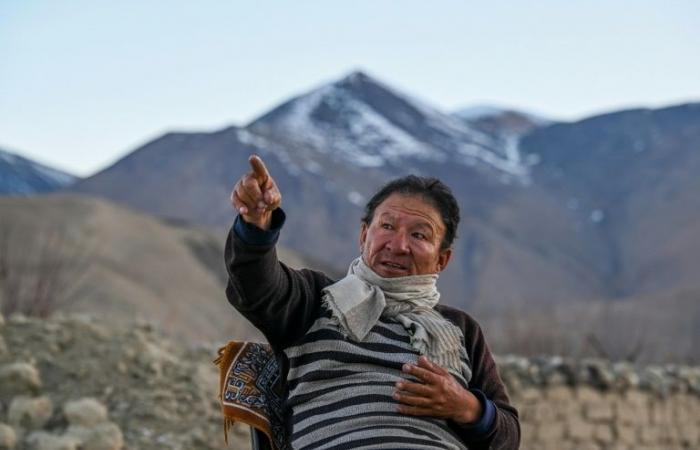Tibetan shepherds in Ladakh, in the Himalayas, were free to graze their flocks without worrying about borders until recently. But today they find themselves caught in the border conflict between India and China.
Since 2020, large swathes of their traditional pastures have become demilitarized “buffer zones” to keep the forces of the two major Asian powers at a distance and prevent clashes.
“The Indian army prevents us from going there (…) but it is our land, not China’s,” remarks Morup Namgyal, a 57-year-old goat herder who lives in the village of Chushul , at 4,300 meters above sea level, on the Indian side.
This shepherd comes from the semi-nomadic and Buddhist Changpa ethnic group, who raises yaks and goats producing cashmere wool, with a fine, silky fiber, very warm and resistant.
A hand-to-hand clash on the border of Tibet and the Indian region of Ladakh in June 2020 left at least twenty dead on the Indian side and four among the Chinese.
The two countries subsequently decided to withdraw tens of thousands of troops from the area, and agreed to no longer deploy troops inside a separation strip.
According to a report published last year by the think tank International Crisis Group (ICG), “the physical separation of the two armies has considerably reduced the risk of clashes.”
– Loss of the best pastures –
Restrictions have been imposed on the Changpa because livestock movements in the buffer zones are “considered an aggression”, a senior Indian security official told AFP on condition of anonymity.
But the herders see themselves as the losers in this situation, caught in a conflict for which they are not responsible.
Mr. Namgyal, like other breeders, affirms that the areas lost were those which made it possible to feed the animals even in extreme cold, when temperatures drop to -35°C.
“We used to go to these areas for winter grazing,” confirms Konchok Stanzin, a Chushul municipal councilor.
When the troops withdrew in 2020, “observation posts and other structures” were dismantled, he explains.
But new roads were built as well as dug-in artillery positions and bunkers.
After talks in February, Delhi, however, assured that it wanted “complete disengagement” along the demarcation line, as an “essential foundation for the restoration of peace”.
China’s defense ministry said last month that the situation on the border was “generally stable”, with both sides using diplomatic and military channels to “resolve border issues on the ground”.
– Falling wool production –
“To avoid new clashes, we must ensure that the rivalry can be managed amicably,” notes the International Crisis Group, according to which the “lack of clarity” on the definition of the border could lead to new “ hostile encounters.
In the meantime, India has provided Changpa herders with winter huts, and a representative of the Modi government has suggested the creation of permanent settlements in a strategy to consolidate the country’s presence in the disputed mountainous area.
For Namgyal Phunchok, a leader of the Changpa community in Chushul, the pastoral way of life is in danger.
“In winter, the government provides us with fodder for our goats, but it is not the same as natural pasture,” he says.
Cashmere wool production collapsed and about a tenth of the families in his village stopped raising goats altogether.
“Our difficulties increase every year,” concludes, disappointed, Mr. Phunchok.
Do you have a real estate project in mind? Yakeey & Médias24 help you make it happen!






